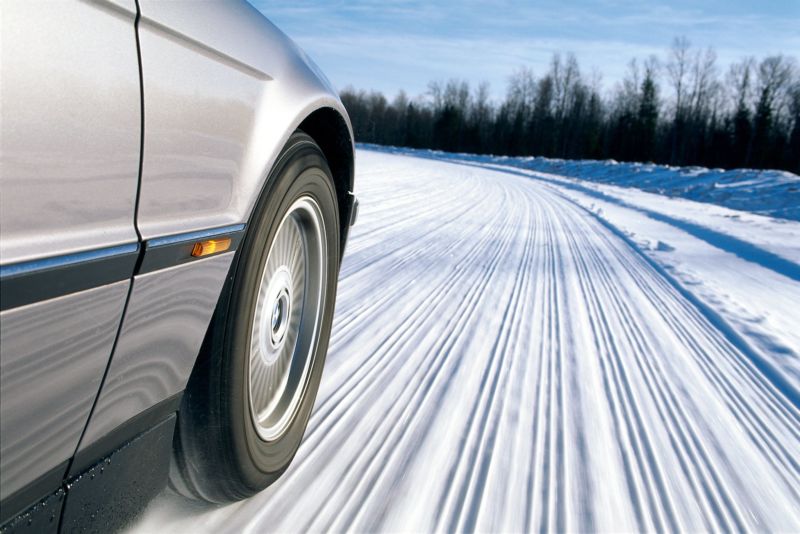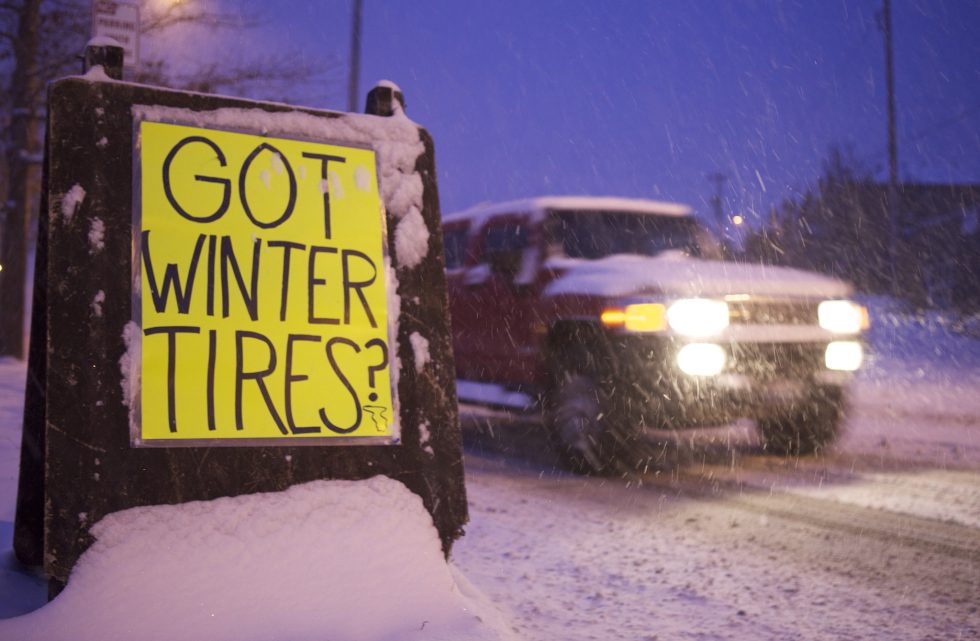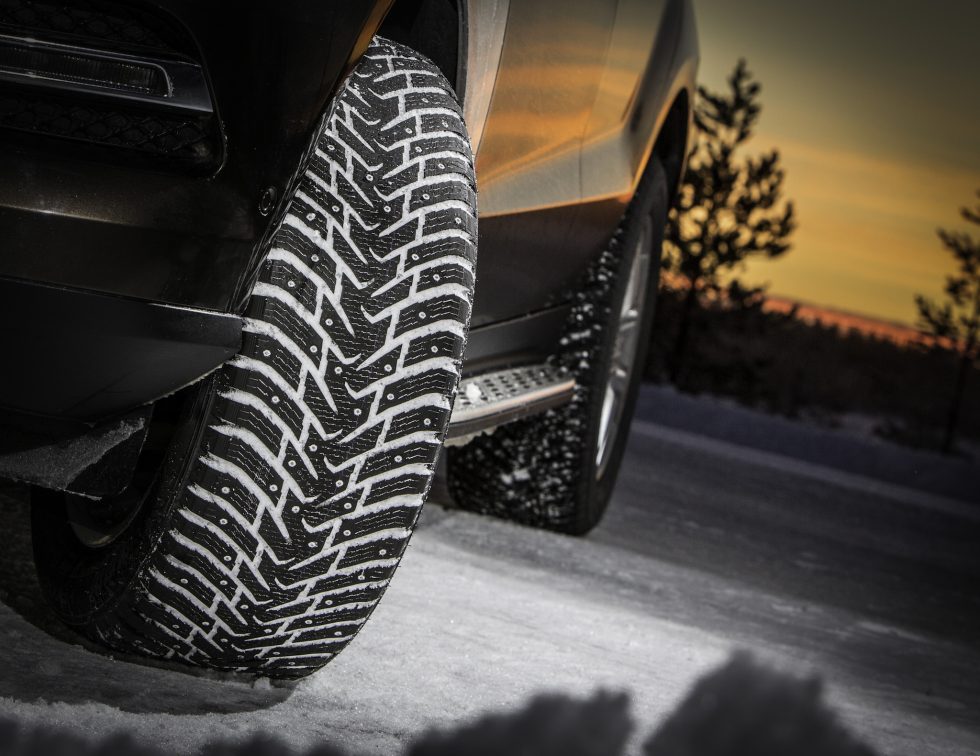
Let's just start with the big takeaway: as a general rule, if you drive someplace where the temperature falls below 45 degrees Fahrenheit (seven degrees Centigrade) with any regularity in the winter, you should put winter tires on your car.
Modern cars pack in so much safety technology—traction control, all-wheel drive, anti-lock brakes, and all the rest—that it's easy to forget only one thing is truly keeping you from plowing into a guard rail or the car in front of you: a four-inch-by-four-inch bit of rubber called a "contact patch,” essentially the small bit of the tire that’s in contact with the road at a given time.
The grip provided by your tires makes everything happen in a car, from accelerating to braking to turning. Increase the grip, and you can do all of those things better. Decrease the grip, and you'll end up using much more pavement than you planned—that is, if you can stop at all.
As an automotive journalist, I cannot emphasize enough how important this simple concept is. I don't work for a tire manufacturer, and I have no particular interest in the tires on your car except to encourage you to be the safest driver you can be. If you have good tires on your car, you're less likely to slide into me at an intersection.
I'm not just speaking based on research, either. Before settling into auto journalism, I spent five years as a volunteer firefighter in Durango, Colorado. Most of my calls, especially in the winter months, were to car crashes. And though this is anecdotal at best, most of the cars at fault in those crashes did not have winter tires equipped.
So again, the takeaway here is to equip winter tires if your regional conditions call for them. With that out of the way, let's get into why your tires matter.
Compromises

"The tire industry has kind of been a victim of its own hype," says Mark Cox, director of the Bridgestone Winter Driving School in Steamboat Springs, Colorado. "They started selling the all-season tire as the cure-all, saying that these tires will get you by anywhere—but it's not the case."
Part of the problem today is that so many people think of "winter" tires as "snow" tires. If you look outside and see bare pavement, it's easy to think that a tire is a tire. Ask any racer, and they'll tell you that compound is everything. Pirelli builds four different dry-tire compounds for Formula One, each with different characteristics based on the track and the anticipated weather. Each has a different optimal operating temperature, and using the wrong tire can mean the difference between winning and not. The same is true for the tires on your everyday commuting car.
"The difference in performance is roughly one-third between all-season and winter tires," says Cox. "Races are won by tenths or hundredths of a second. A third is a lot."
"The joke for us," says Steve Bourassa, director of North American Products and Pricing for Nokian, "is that an all-season is only an all-season if you live in Phoenix. In the Northern areas, we have changing conditions, so your tires need to change accordingly."
Nokian started producing tires in the early 1930s and was the first company to produce a tire specifically for winter use. Given Nokian is based in Finland, this makes sense. The company's Hakkapeliitta line launched in 1936, and the name has been used continuously ever since. The Hakkapeliitta was the name given to Finnish light cavalrymen in the first half of the 1600s, and it remains a catchy—if difficult to spell—name for the company's winter tires.

All-season tires—and winter tires, for that matter—are inherently about compromise. There will always be a particular temperature and condition where a tire will work best. On a racetrack, it's easy to optimize a tire for the conditions. But out in the real world, all-season options need to handle temperatures from zero to 120˚F (-18-49˚C), the dry and the rain, snow and ice, and everything in between.
"If you're building a tire—if you want something that you'll never replace and accommodates different types of seasons—the reality is, you're making compromises in product design and what your priorities are," says Bourassa.
There are three things to consider in a winter tire: performance on dry pavement, snow, and ice. Though that dry pavement might seem the same whether it's winter or summer, your tires act very differently.
As rubber gets colder, it becomes more and more inelastic. The key for traction and mobility is to keep the surface flexible and above the "Glass Transition Temperature" where a rubbery compound (like a tire) transitions into a more brittle "glassy" state. Above this temperature, the tire performs well by gripping the pavement and helping the car go, stop, and turn. Go below this temperature, and performance degrades rapidly. (Naturally, the exact degree varies with each manufacturer and with individual tire compounds. Such information is proprietary and closely guarded.)
All-season tires must perform well at a wider range of temperatures. The cut-off where winter tires really begin to outperform their all-season counterparts is about 45˚F (7˚C); below this point, all-season tires' performance begins to fall off, according to most tire experts I spoke with.

But winter tires are formulated differently. They have large amounts of silica and a whole host of other materials in smaller amounts that keep things nice and flobbery, even at low temperatures. Due to proprietary information, none of the tire companies will discuss the details behind its rubber compounds. This is the literal secret sauce when it comes to modern tires.
"In the cold, a standard tire is inflexible and turns very hard," explains Ron Margadonna, senior tire marketing manager for Michelin. "That's the first thing that we need to deal with. Winter tires are designed for winter, for cold weather." If your tires are hard as a rock, they won't perform as well—and that's true even if all the other conditions are perfect aside from temperature.
This winter compound design is perhaps the most important reason to put winter tires on your car, and the tire will work whether it's snowing or not—as long as it's cold, winter tires will far outperform all-seasons.
Generally, winter tires also have larger tread and more cuts and sipes to deal with all the wetness and slush such chilly seasons typically bring. Because when you get into precipitation, winter tires face more varied foes than a simple summer shower.
reader comments
517